Abstract
1. The suitability of inulin and mannitol as markers of the diffusional space that exists between the surface of frog skin and the outer barrier to sodium transport has been compared in experiments designed to measure the rapid uptake of sodium.
2. Inulin and mannitol both equilibrate finally with the same space at the outer surface of the frog skin, but the rate at which this equilibration occurs is considerably faster for mannitol.
3. The dependence of the rapid uptake of sodium on the concentration of sodium in the external medium, using mannitol to correct for extracellular sodium, can be described by simple saturation kinetics with an apparent Km for sodium entry of 24 mM and a maximal rate of uptake of 1·28 μequiv/cm2. hr.
4. The effect of amiloride is to inhibit sodium uptake, the degree of inhibition depending both on the concentration of sodium in the external medium and on the level of transepithelial transport normally maintained by the skin.
5. Ouabain inhibits sodium uptake when the tissue has been pre-incubated in sodium containing medium. It has no effect on sodium uptake if the pre-incubation takes place in sodium free medium.
6. A short-circuit current and potential difference can be elicited across frog skin in the presence of ouabain, by increasing the concentration of sodium bathing the outside surface. This potential and short-circuit current is abolished by the presence of amiloride.
7. These results provide direct evidence that amiloride acts to stop entry of sodium into the transport compartment and suggest that the ouabain inhibition of sodium uptake is mediated primarily through an increase of epithelial sodium concentration.
Full text
PDF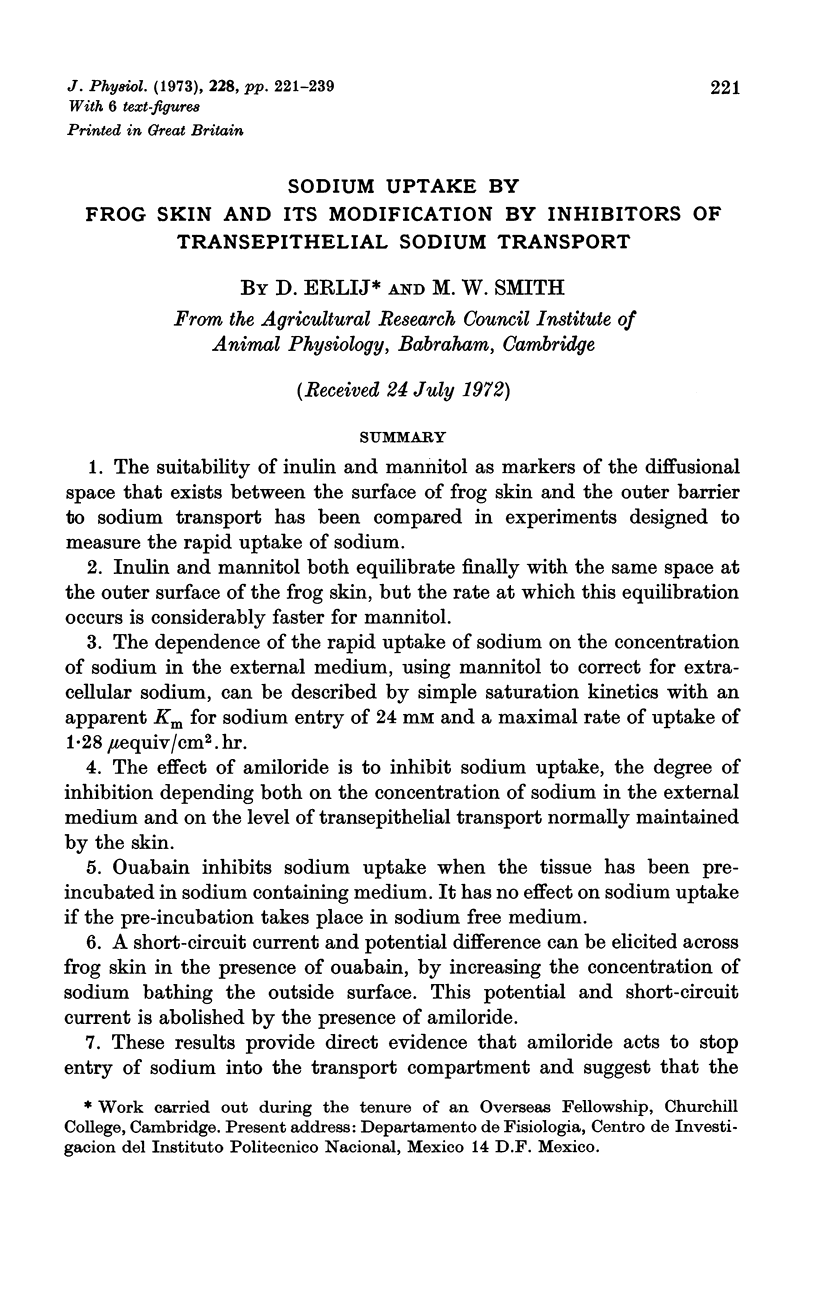
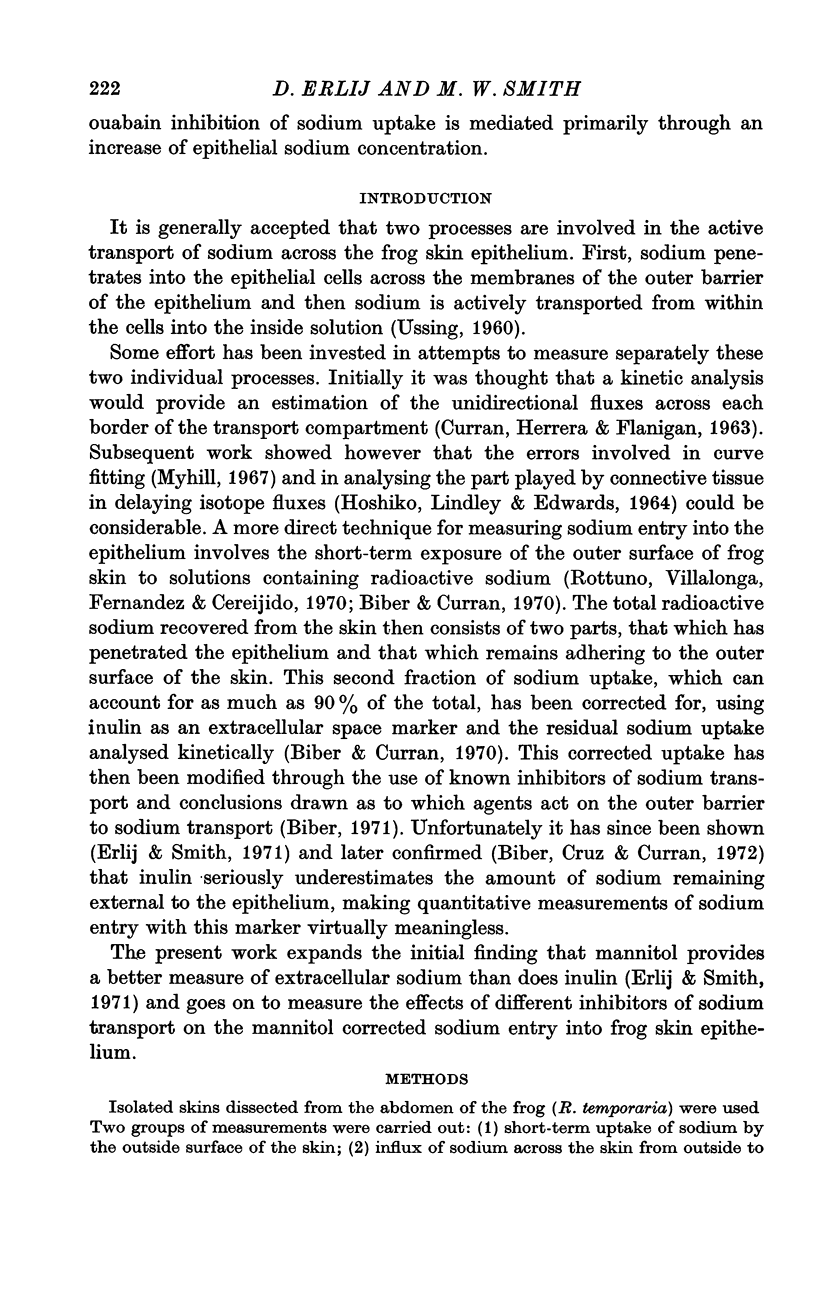
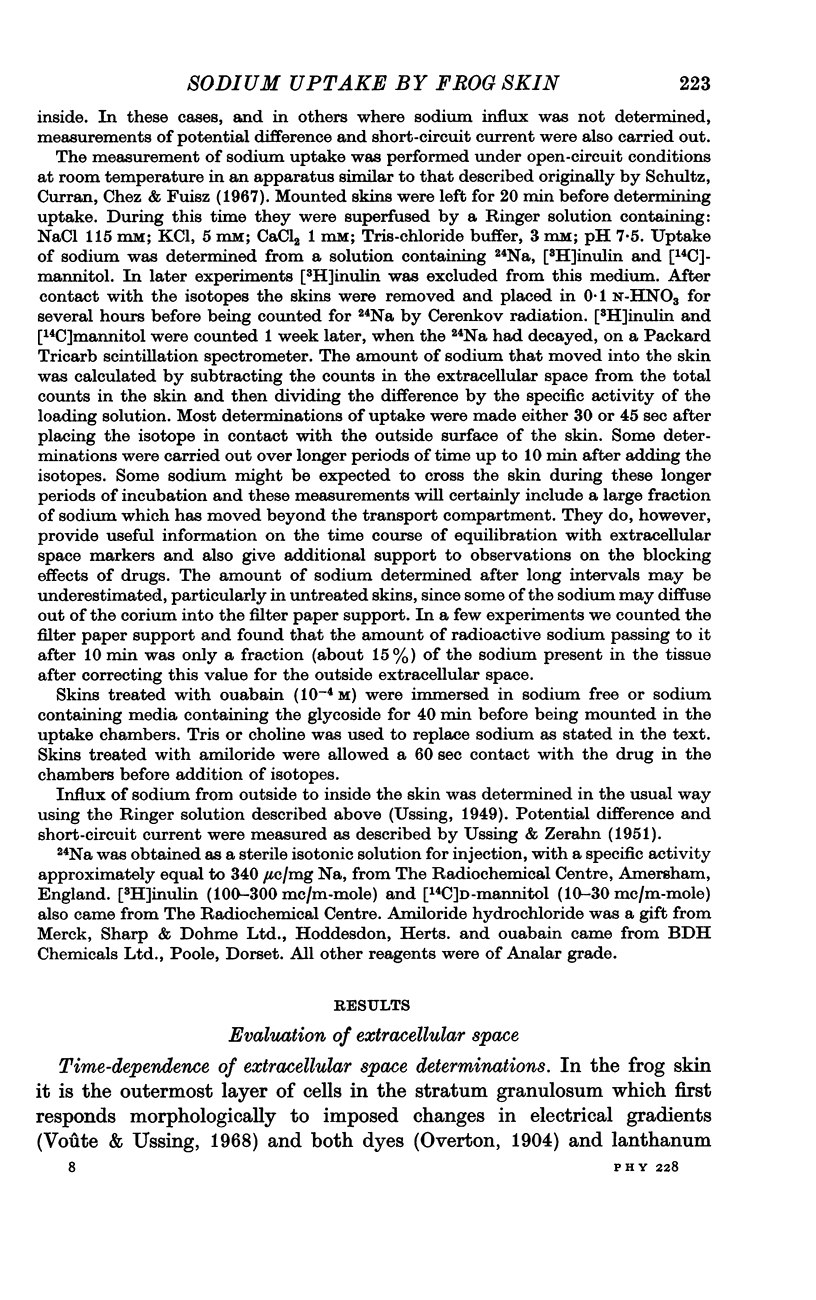
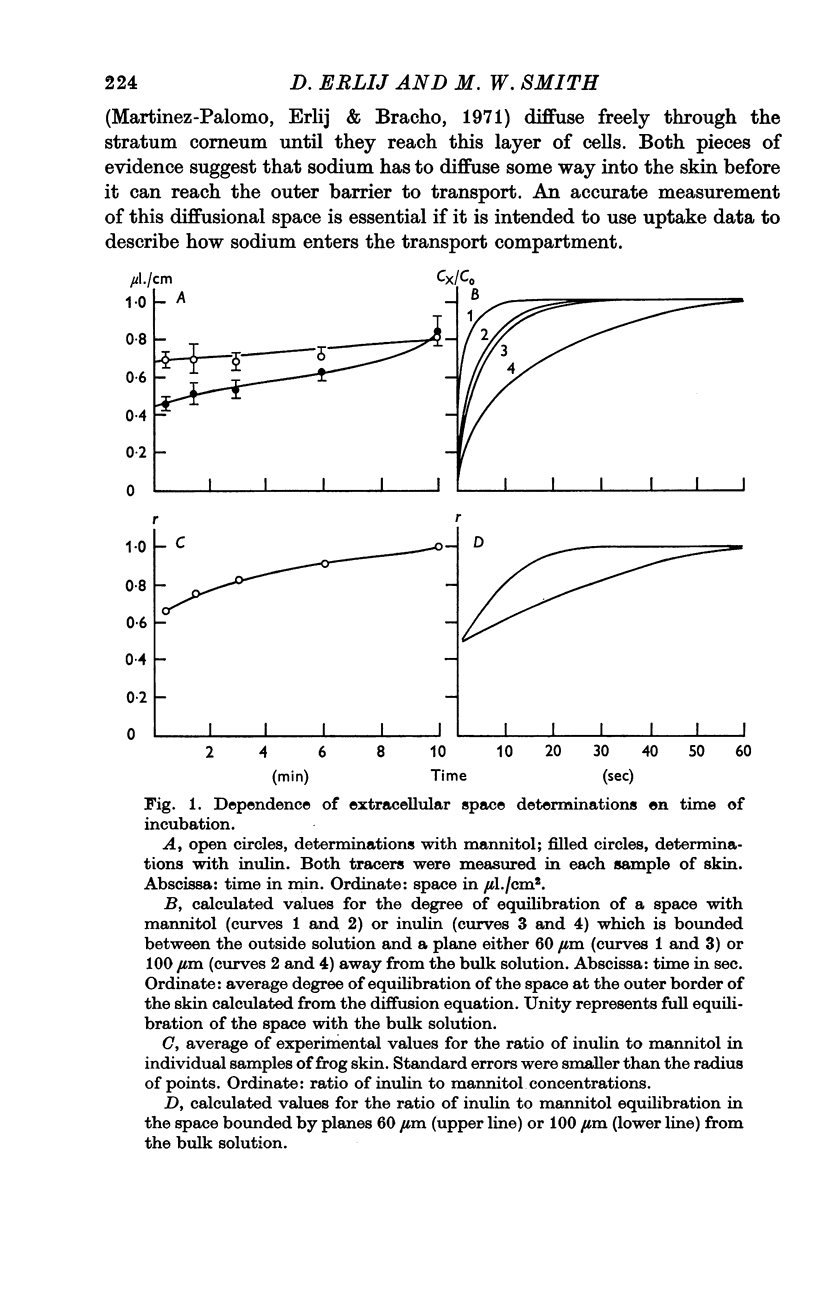
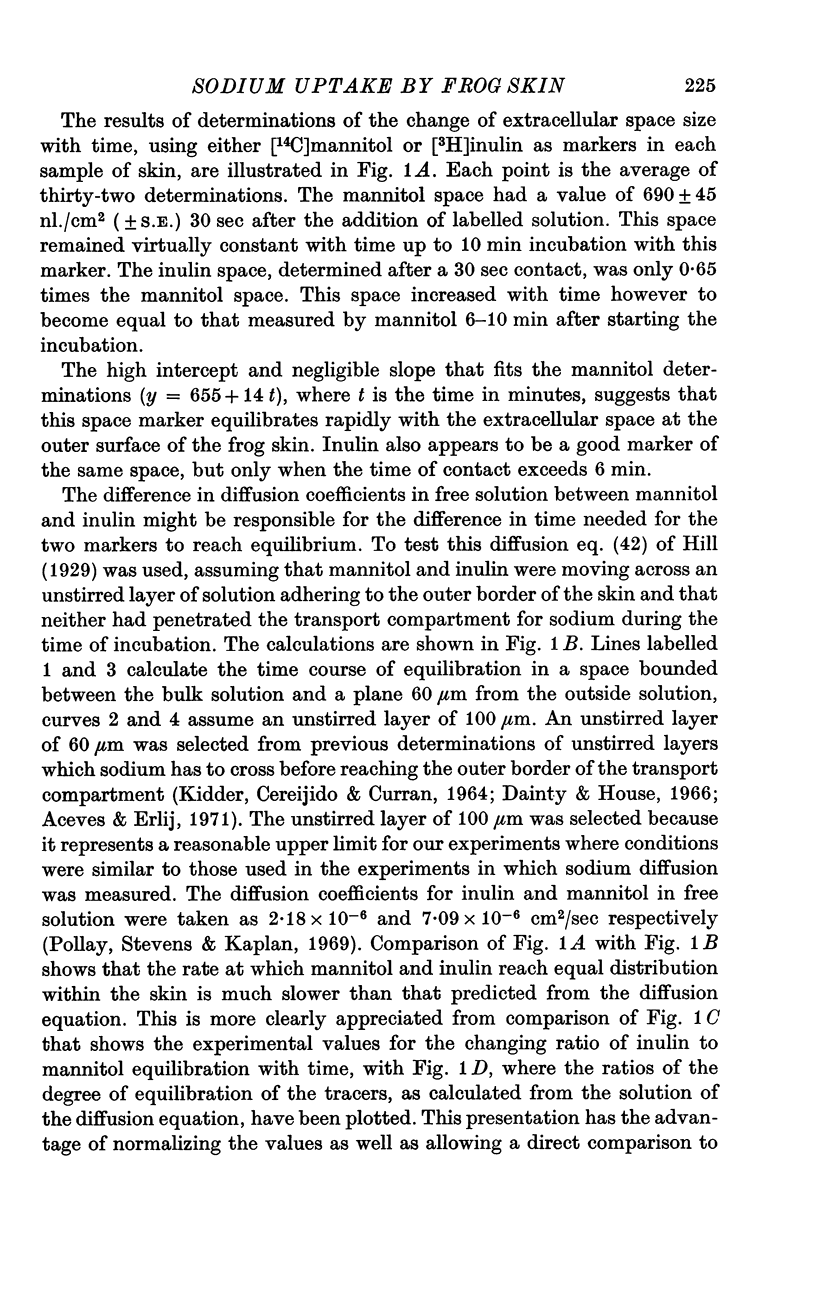
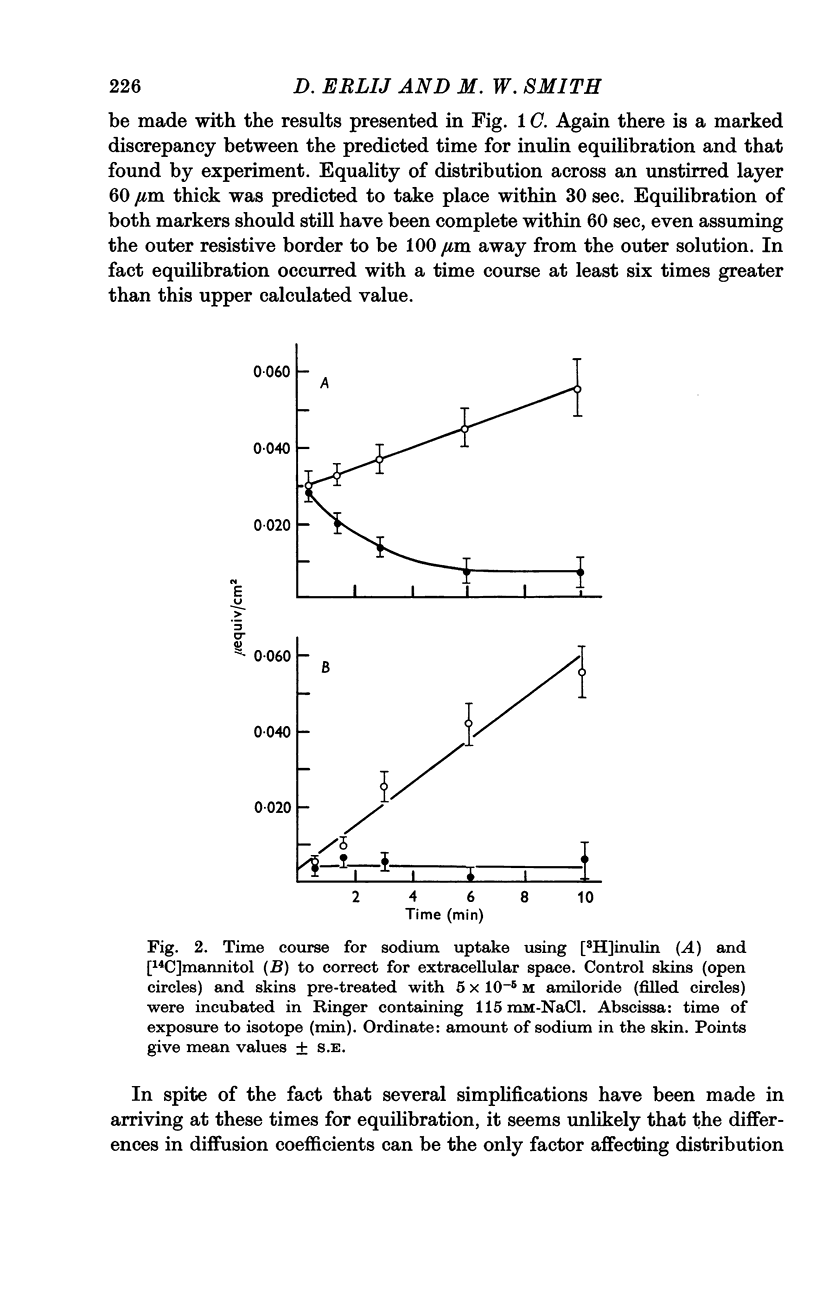
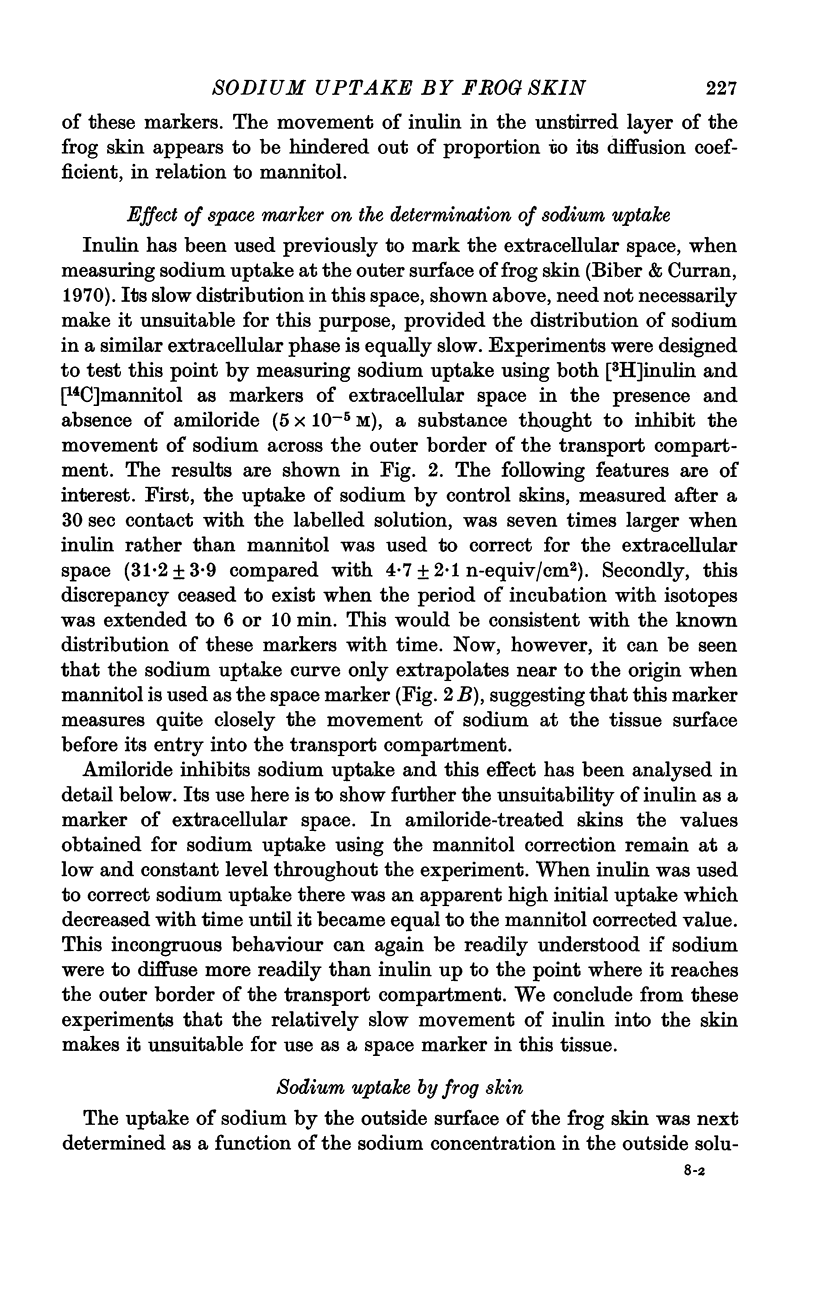
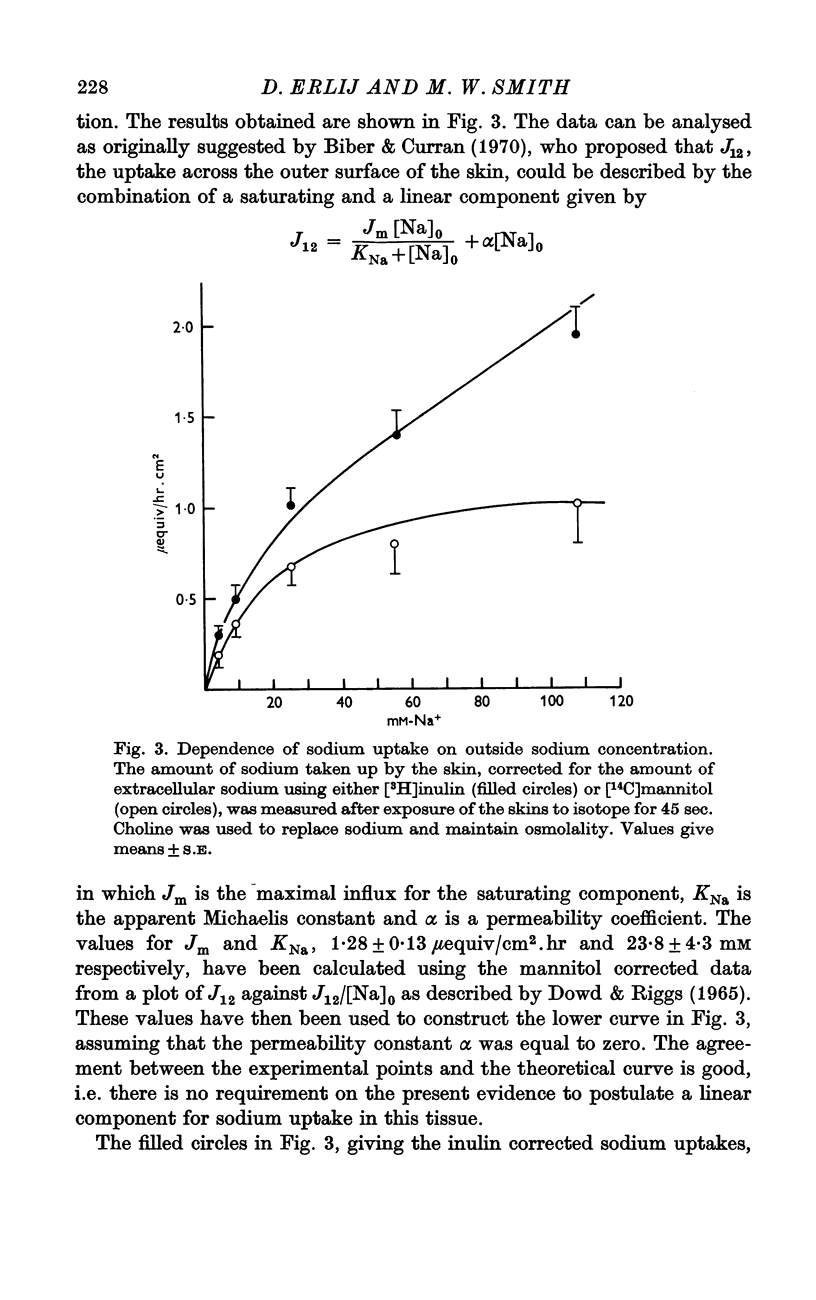
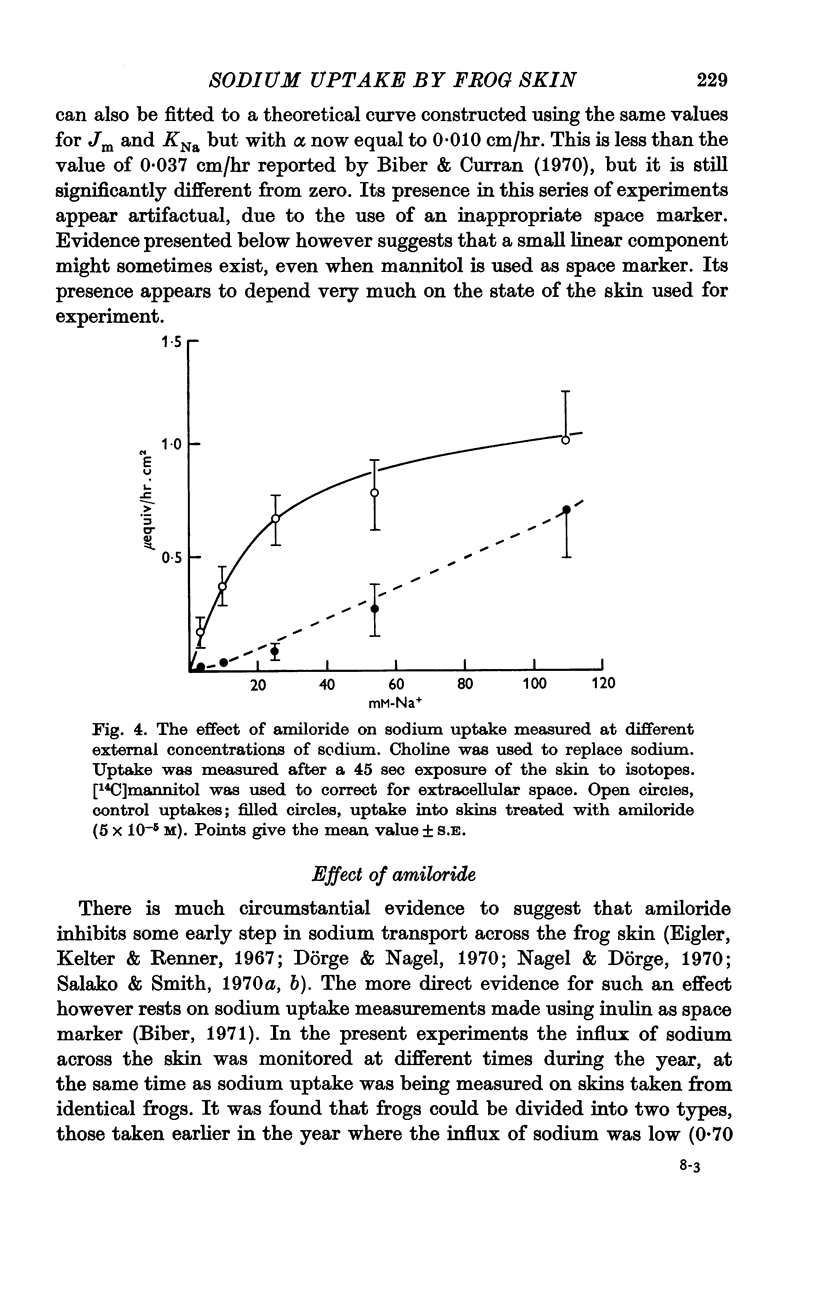
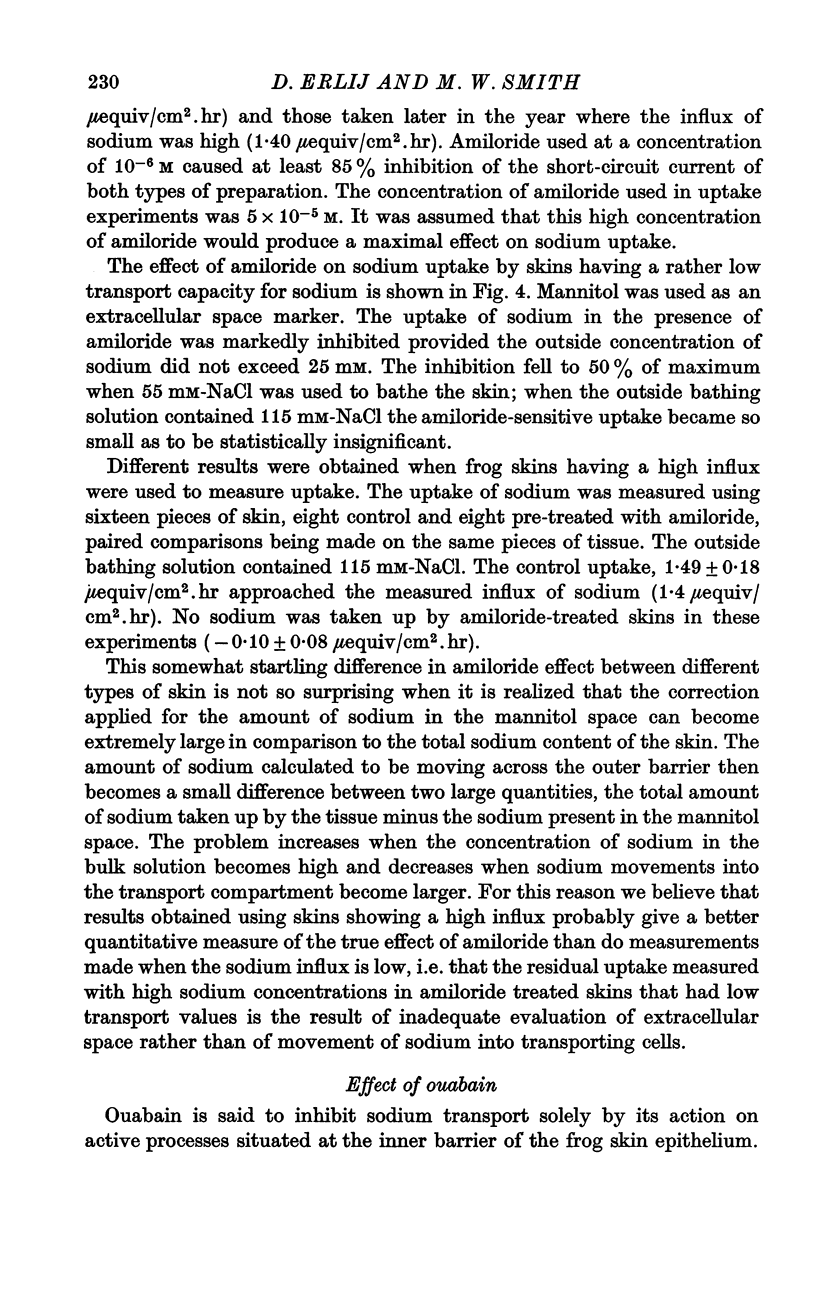
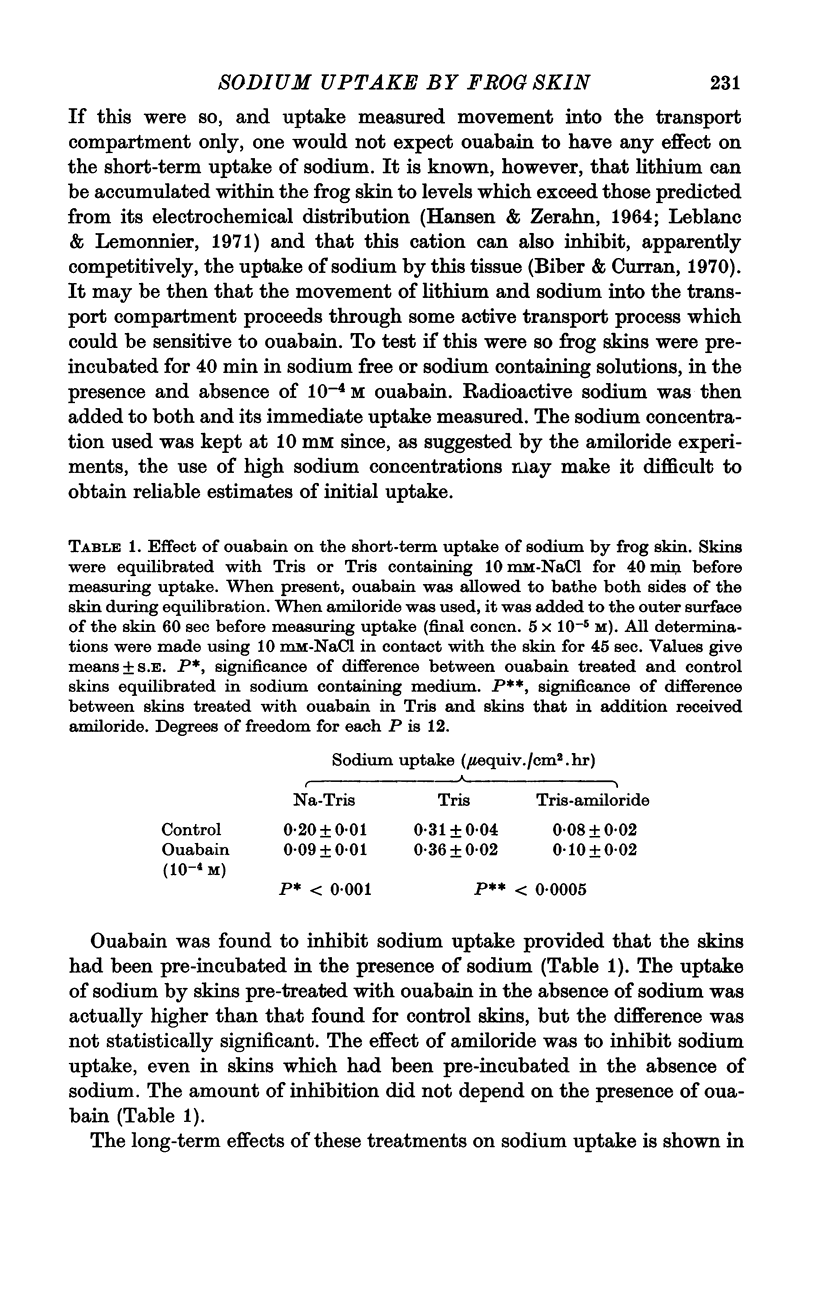
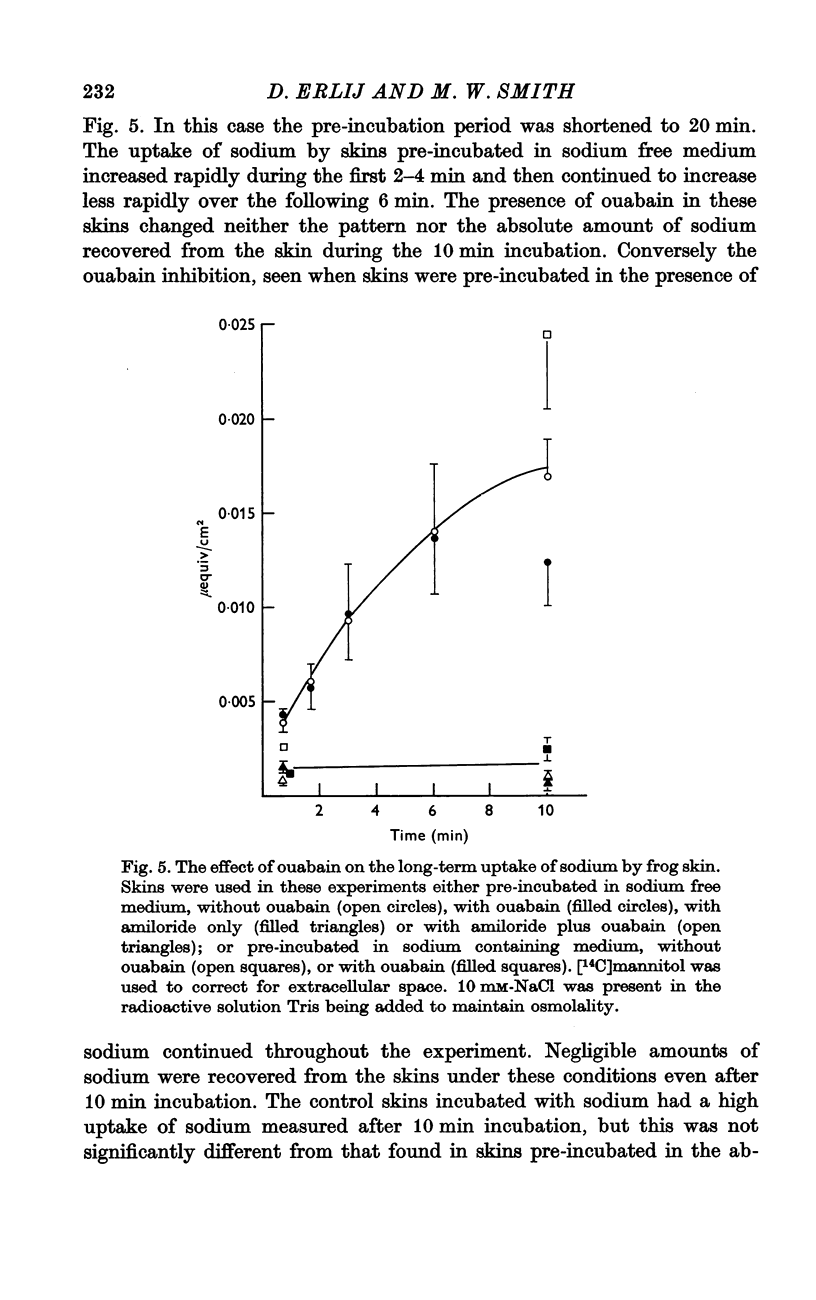
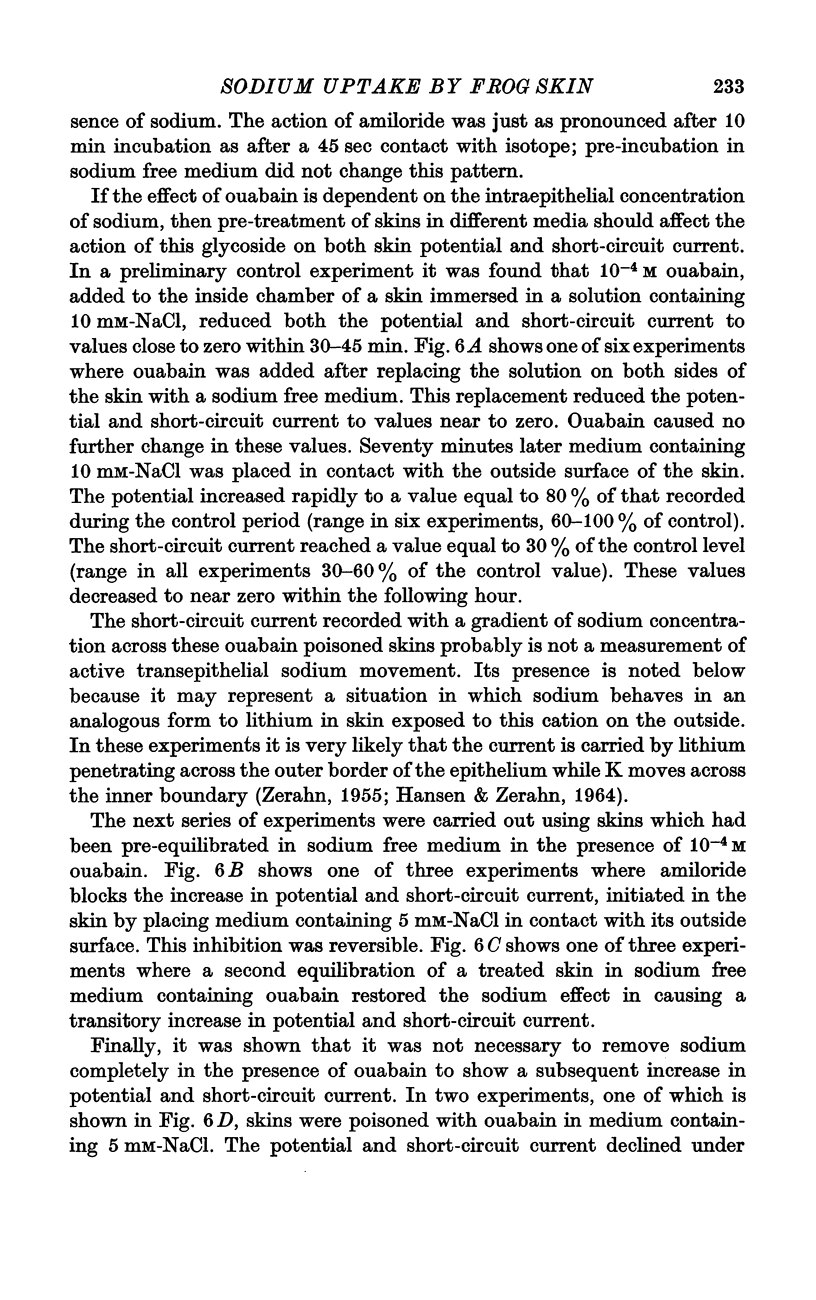
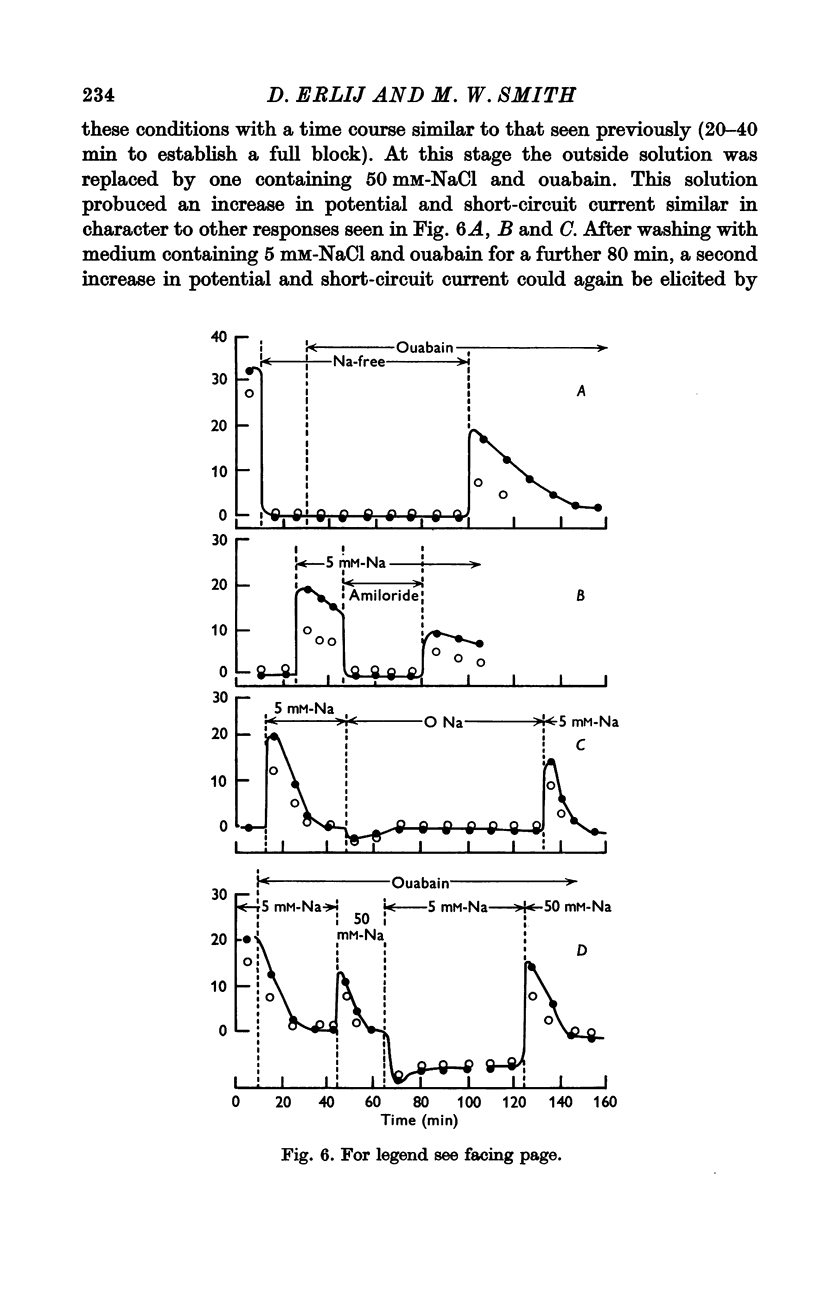
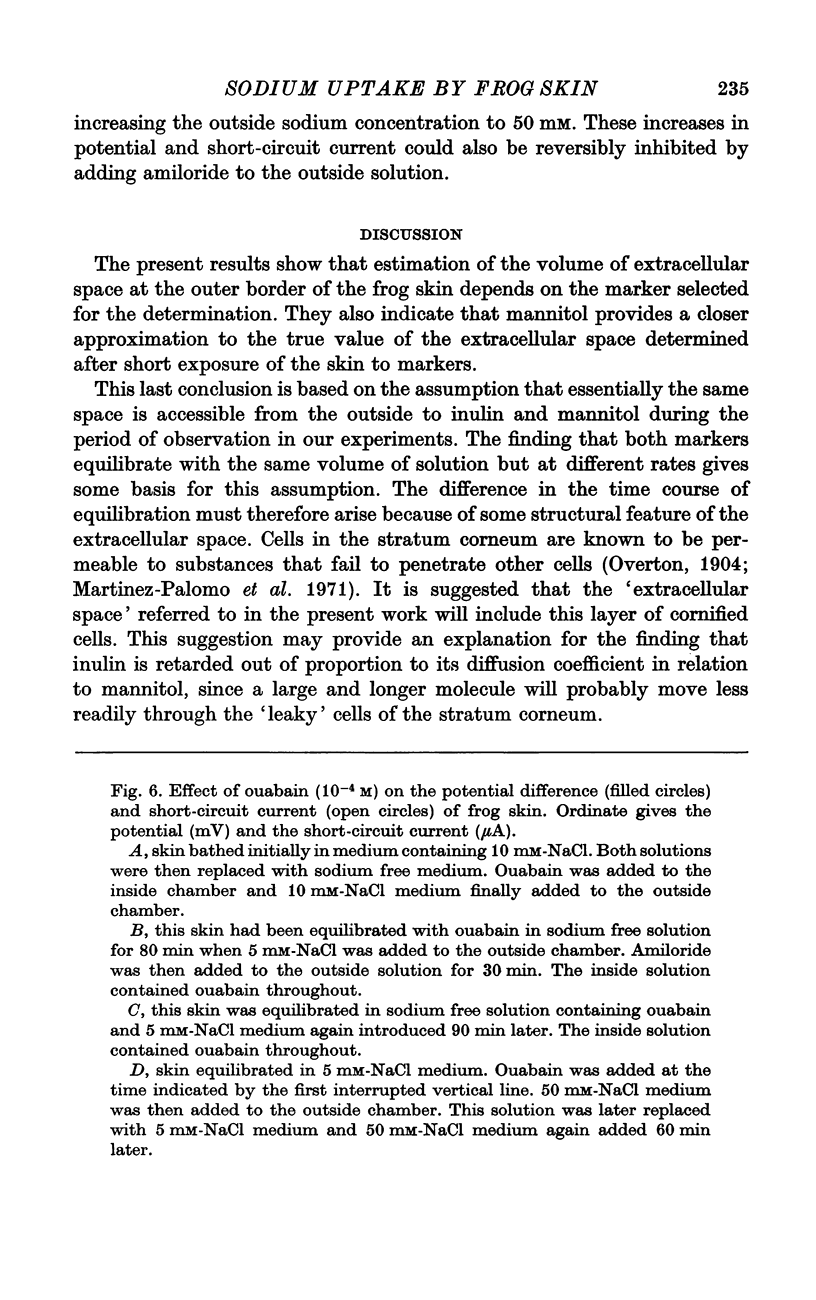
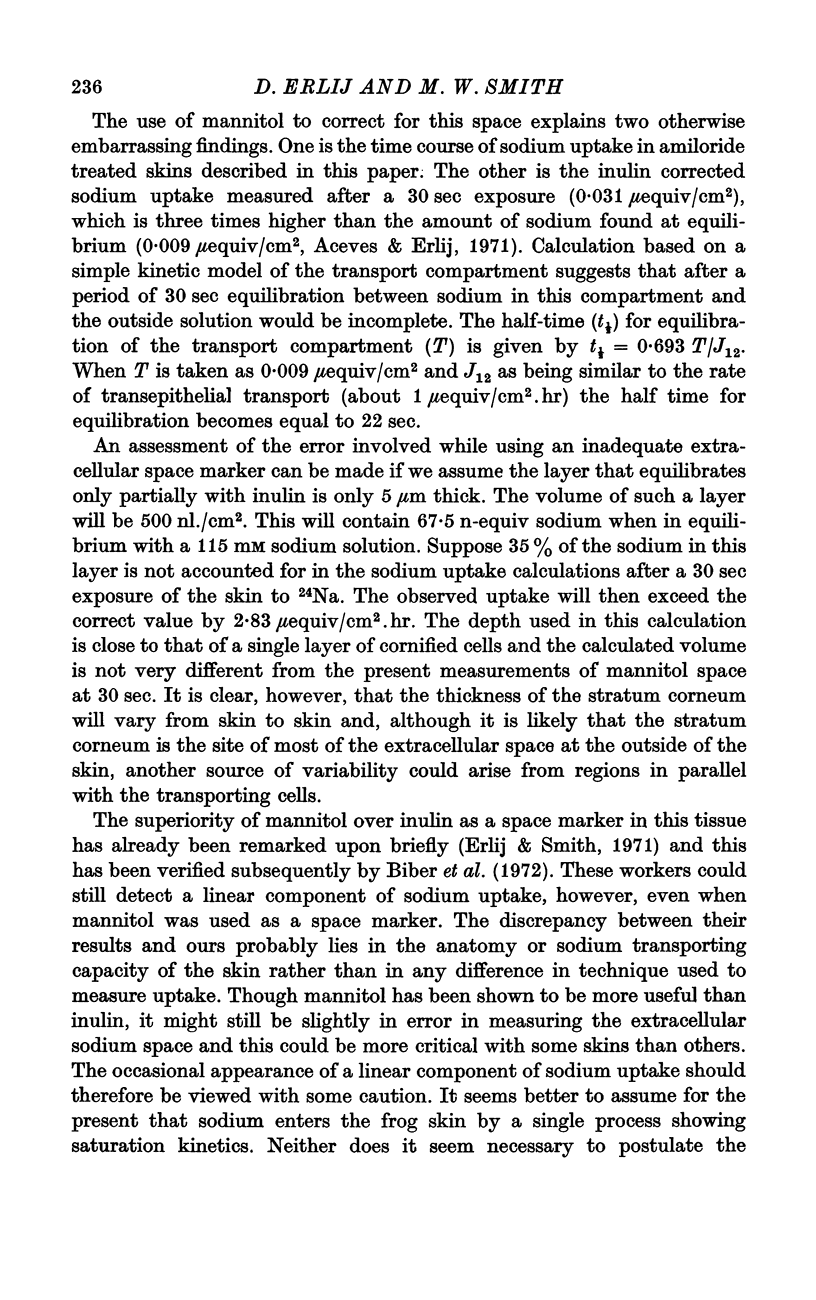
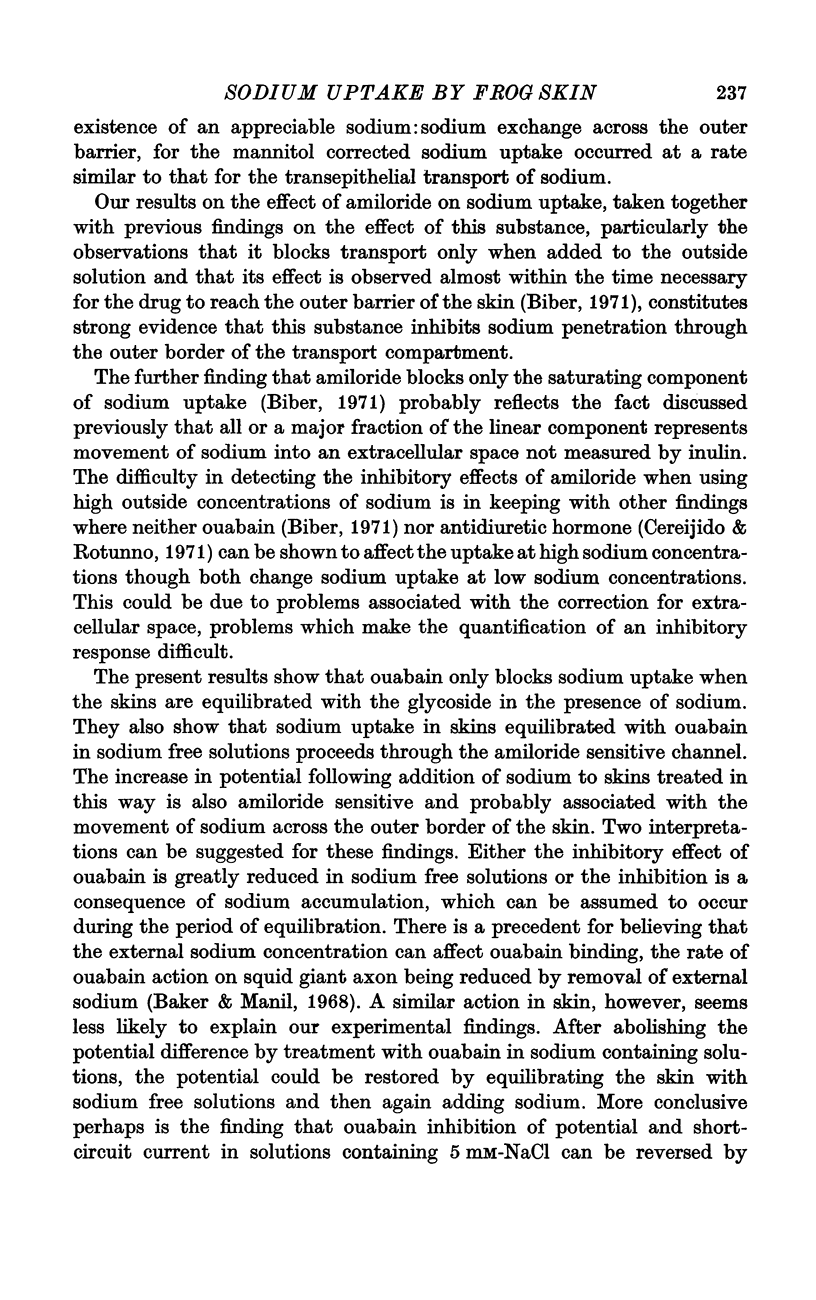
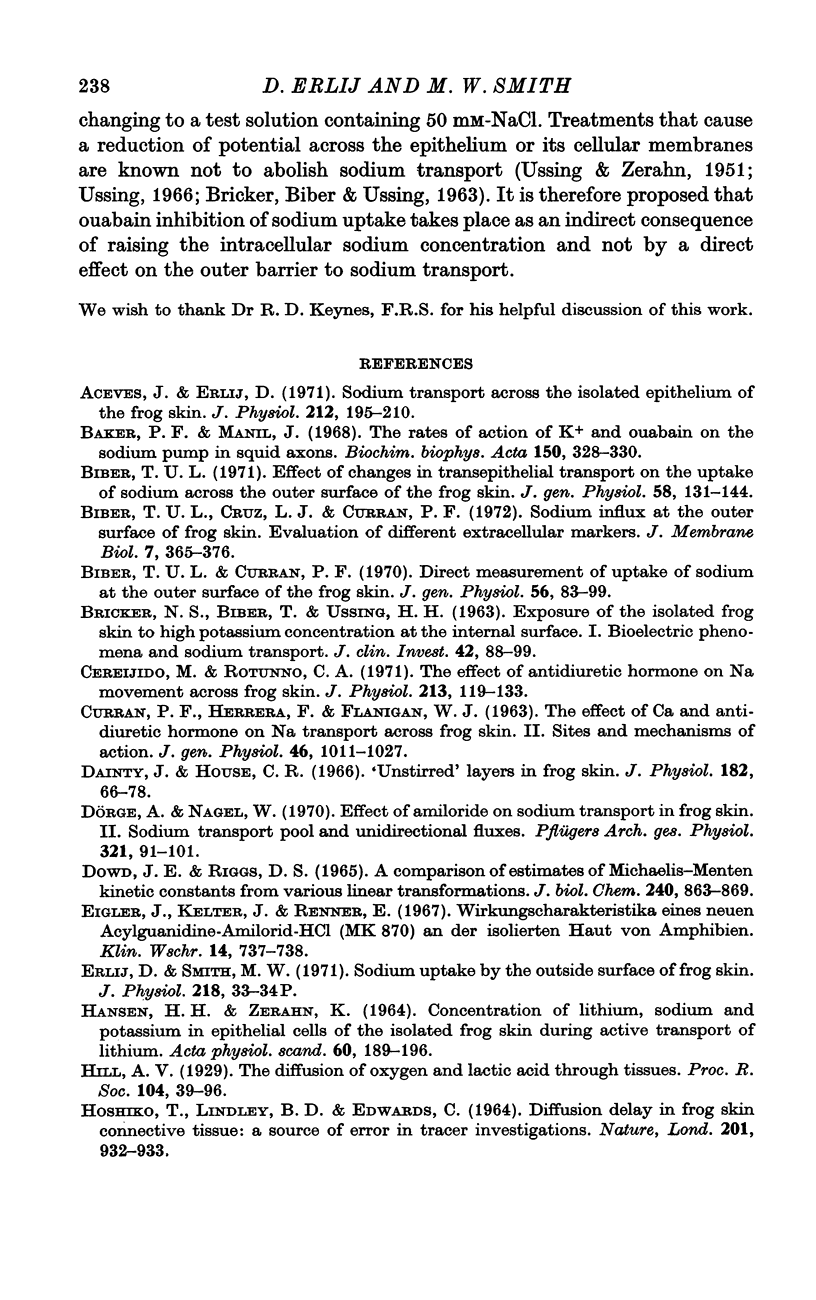
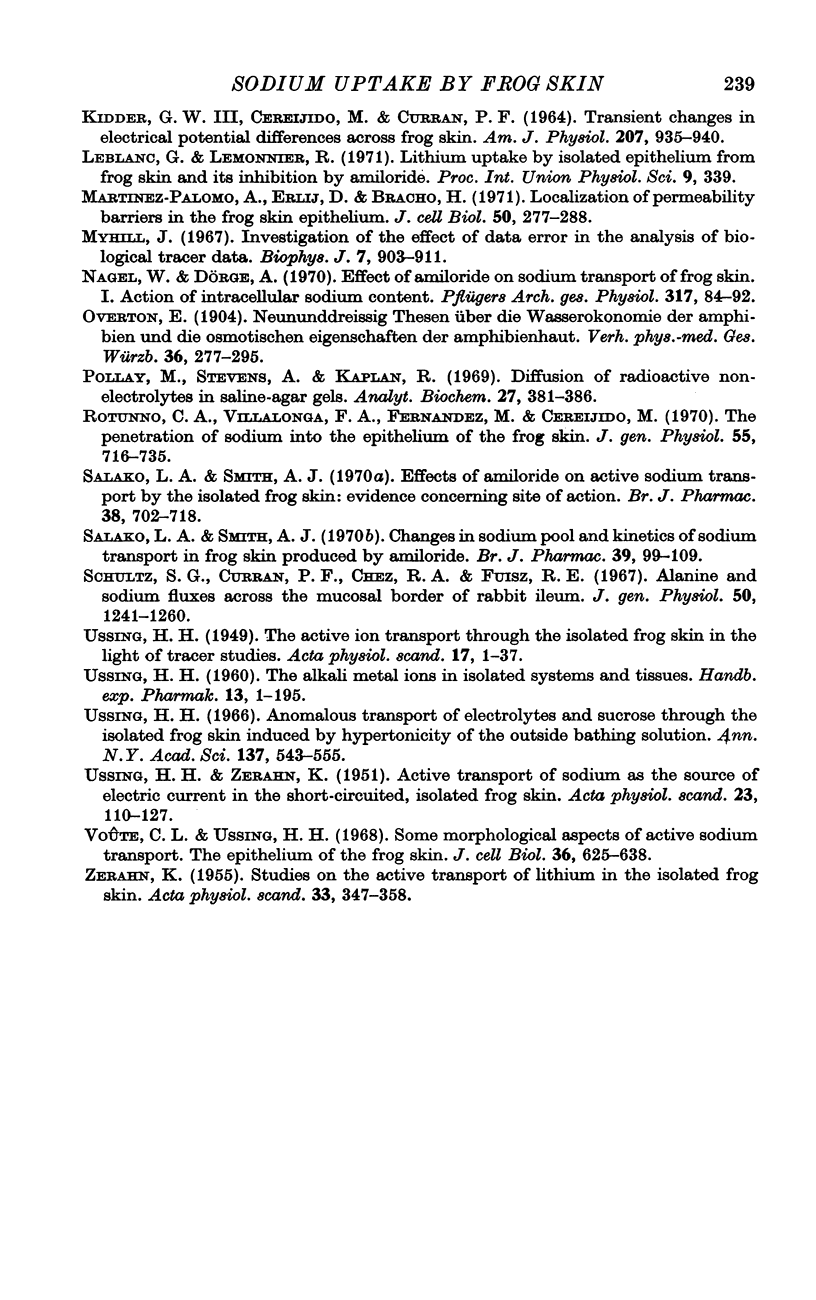
Selected References
These references are in PubMed. This may not be the complete list of references from this article.
- Aceves J., Erlij D. Sodium transport across the isolated epithelium of the frog skin. J Physiol. 1971 Jan;212(1):195–210. doi: 10.1113/jphysiol.1971.sp009317. [DOI] [PMC free article] [PubMed] [Google Scholar]
- BRICKER N. S., BIBER T., USSING H. H. Exposure of the isolated from skin to high potassium concentrations at the internal surface. I. Bioelectric phenomena and sodium transport. J Clin Invest. 1963 Jan;42:88–99. doi: 10.1172/JCI104699. [DOI] [PMC free article] [PubMed] [Google Scholar]
- Baker P. F., Manil J. The rates of action of K+ and ouabain on the sodium pump in squid axons. Biochim Biophys Acta. 1968 Mar 1;150(2):328–330. doi: 10.1016/0005-2736(68)90181-8. [DOI] [PubMed] [Google Scholar]
- Biber T. U., Curran P. F. Direct measurement of uptake of sodium at the outer surface of the frog skin. J Gen Physiol. 1970 Jul;56(1):83–99. doi: 10.1085/jgp.56.1.83. [DOI] [PMC free article] [PubMed] [Google Scholar]
- Biber T. U. Effect of changes in transepithelial transport on the uptake of sodium across the outer surface of the frog skin. J Gen Physiol. 1971 Aug;58(2):131–144. doi: 10.1085/jgp.58.2.131. [DOI] [PMC free article] [PubMed] [Google Scholar]
- CURRAN P. F., HERRERA F. C., FLANIGAN W. J. The effect of Ca and antidiuretic hormone on Na transport across frog skin. II. Sites and mechanisms of action. J Gen Physiol. 1963 May;46:1011–1027. doi: 10.1085/jgp.46.5.1011. [DOI] [PMC free article] [PubMed] [Google Scholar]
- Cereijido M., Rotunno C. A. The effect of antidiuretic hormone on Na movement across frog skin. J Physiol. 1971 Feb;213(1):119–133. doi: 10.1113/jphysiol.1971.sp009372. [DOI] [PMC free article] [PubMed] [Google Scholar]
- DOWD J. E., RIGGS D. S. A COMPARISON OF ESTIMATES OF MICHAELIS-MENTEN KINETIC CONSTANTS FROM VARIOUS LINEAR TRANSFORMATIONS. J Biol Chem. 1965 Feb;240:863–869. [PubMed] [Google Scholar]
- Dainty J., House C. R. Unstirred layers in frog skin. J Physiol. 1966 Jan;182(1):66–78. doi: 10.1113/jphysiol.1966.sp007809. [DOI] [PMC free article] [PubMed] [Google Scholar]
- Dörge A., Nagel W. Effect of amiloride on sodium transport in frog skin. II. Sodium transport pool and unidirectional fluxes. Pflugers Arch. 1970;321(2):91–101. doi: 10.1007/BF00586365. [DOI] [PubMed] [Google Scholar]
- Eigler J., Kelter J., Renner E. Wirkungscharakteristika eines neuen Acylguanidins--Amiloride-HCL (MK 870)--an der isolierten Haut von Amphibien. Klin Wochenschr. 1967 Jul 15;45(14):737–738. doi: 10.1007/BF01746103. [DOI] [PubMed] [Google Scholar]
- HANSEN H. H., ZERAHN K. CONCENTRATION OF LITHIUM, SODIUM AND POTASSIUM IN EPITHELIAL CELLS OF THE ISOLATED FROG SKIN DURING ACTIVE TRANSPORT OF LITHIUM. Acta Physiol Scand. 1964 Jan-Feb;60:189–196. doi: 10.1111/j.1748-1716.1964.tb02882.x. [DOI] [PubMed] [Google Scholar]
- HOSHIKO T., LINDLEY B. D., EDWARDS C. DIFFUSION DELAY IN FROG SKIN CONNECTIVE TISSUE: A SOURCE OF ERROR IN TRACER INVESTIGATIONS. Nature. 1964 Feb 29;201:932–933. doi: 10.1038/201932a0. [DOI] [PubMed] [Google Scholar]
- KIDDER G. W., 3rd, CEREIJIDO M., CURRAN P. F. TRANSIENT CHANGES IN ELECTRICAL POTENTIAL DIFFERENCES ACROSS FROG SKIN. Am J Physiol. 1964 Oct;207:935–940. doi: 10.1152/ajplegacy.1964.207.4.935. [DOI] [PubMed] [Google Scholar]
- Martinez-Palomo A., Erlij D., Bracho H. Localization of permeability barriers in the frog skin epithelium. J Cell Biol. 1971 Aug;50(2):277–287. doi: 10.1083/jcb.50.2.277. [DOI] [PMC free article] [PubMed] [Google Scholar]
- Nagel W., Dörge A. Effect of Amiloride on sodium transport of frog skin. I. Action on intracellular sodium content. Pflugers Arch. 1970;317(1):84–92. doi: 10.1007/BF00586701. [DOI] [PubMed] [Google Scholar]
- Pollay M., Stevens A., Kaplan R. Diffusion of radioactive nonelectrolytes in saline-agar gels. Anal Biochem. 1969 Mar;27(3):381–386. doi: 10.1016/0003-2697(69)90051-7. [DOI] [PubMed] [Google Scholar]
- Rotunno C. A., Vilallonga F. A., Fernández M., Cereijido M. The penetration of sodium into the epithelium of the frog skin. J Gen Physiol. 1970 Jun;55(6):716–735. doi: 10.1085/jgp.55.6.716. [DOI] [PMC free article] [PubMed] [Google Scholar]
- Salako L. A., Smith A. J. Effects of amiloride on active sodium transport by the isolated frog skin: evidence concerning site of action. Br J Pharmacol. 1970 Apr;38(4):702–718. doi: 10.1111/j.1476-5381.1970.tb09878.x. [DOI] [PMC free article] [PubMed] [Google Scholar]
- Schultz S. G., Curran P. F., Chez R. A., Fuisz R. E. Alanine and sodium fluxes across mucosal border of rabbit ileum. J Gen Physiol. 1967 May;50(5):1241–1260. doi: 10.1085/jgp.50.5.1241. [DOI] [PMC free article] [PubMed] [Google Scholar]
- USSING H. H. The active ion transport through the isolated frog skin in the light of tracer studies. Acta Physiol Scand. 1949 Jan 31;17(1):1–37. doi: 10.1111/j.1748-1716.1949.tb00550.x. [DOI] [PubMed] [Google Scholar]
- USSING H. H., ZERAHN K. Active transport of sodium as the source of electric current in the short-circuited isolated frog skin. Acta Physiol Scand. 1951 Aug 25;23(2-3):110–127. doi: 10.1111/j.1748-1716.1951.tb00800.x. [DOI] [PubMed] [Google Scholar]
- Ussing H. H. Anomalous transport of electrolytes and sucrose through the isolated frog skin induced by hypertonicity of the outside bathing solution. Ann N Y Acad Sci. 1966 Jul 14;137(2):543–555. doi: 10.1111/j.1749-6632.1966.tb50180.x. [DOI] [PubMed] [Google Scholar]
- Voûte C. L., Ussing H. H. Some morphological aspects of active sodium transport. The epithelium of the frog skin. J Cell Biol. 1968 Mar;36(3):625–638. doi: 10.1083/jcb.36.3.625. [DOI] [PMC free article] [PubMed] [Google Scholar]


